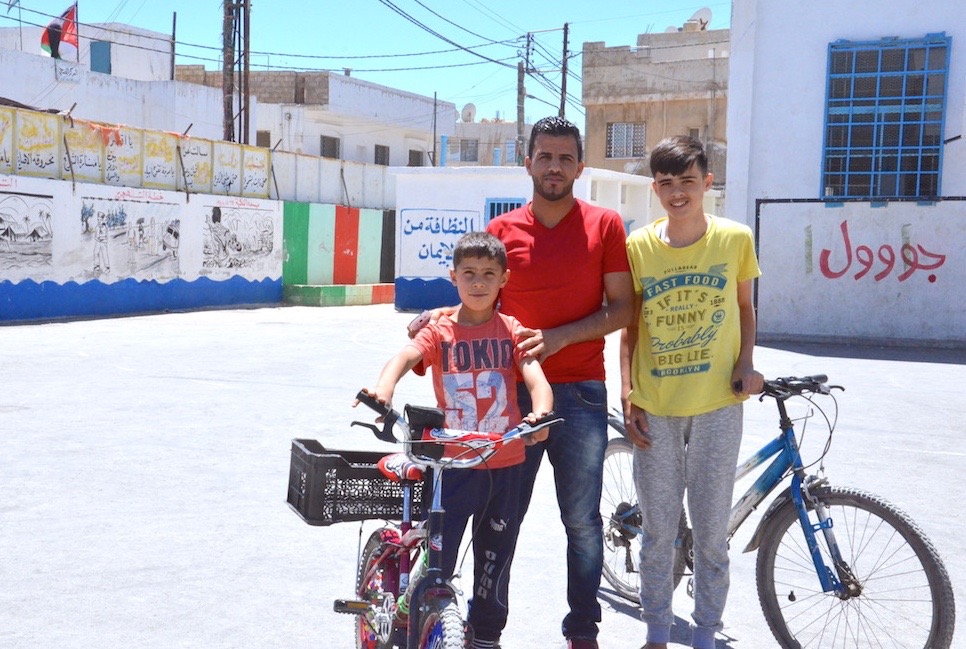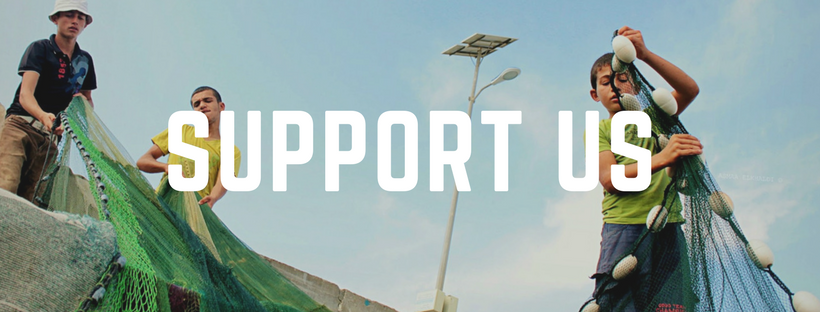In a packed classroom, where 40-50 children are sharing the same classroom, the need for creative teaching methods is a necessity – especially in a refugee camp. The 28-year-old teacher Ibrahim Al-Deges, who grew up in the Palestinian refugee camp, Madaba camp, south of Amman, ascertains that.
BY SOUHA AL-MERSAL
A generation of refugee kids
When he was a child, Ibrahim Al-Deges went to the nearby boys’ school which is administered by the United Nations Relief and Works Agency (UNRWA) in Jordan. Today, he clearly remembers how hard it was back then to concentrate in a classroom filled with too many students, noise and “boring” learning methods. The school was reserved for Palestinian children living in the camp who numbered far more than the schools could accommodate for. Therefore, the school introduced a half-day school system that would divide the classes in morning and afternoon lessons so that all children could acquire an academic achievement. But there was, according to Ibrahim, neither the time nor the necessary capabilities to provide the children proper learning.
Today, Ibrahim has returned; “I came back because I wanted to make a difference for the children and give something back to the generation of refugee children that I belong to,” he says.
“At school there were many challenges”, he remembers, mentioning the learnings methods as one of them. The quality, or lack of such, of the learning ways Ibrahim’s school took use of back then has been a strong motivation for his choice of returning today and becoming a teacher – his main goal is to improve the learnings methods in the school.
“When I started working at the school, it was important for me to introduce new, creative learning methods that put the children in the center. Many of the children have grown up under great pressure in the camp and only the school acts as a variety from their difficult reality,” says Ibrahim.
From learning without soul – to creativity
His childhood memories of the cold, bare walls and the teachers yelling loudly across the class room, are still fresh. The lessons were rigid, boring and without soul, Ibrahim tells. Today he works with the children through games he has invented himself and having safe learning enviroments are important to him.
The walls got an uplifting coat of paint of red, yellow and green colours. In Ibrahim’s classroom hangs a picture of each student, which they themselves helped making and decorating with frames.
“Here, now, they don’t only think fast and develop professionally – they also move themselves, so they do not get tired and loose motivation,” Ibrahim tells.
Teaching at the school and returning to his old neighbourhood in the refugee camp is an experience Ibrahim is happy with, but there are still many things he wishes he had the resources to change – such as providing more classrooms for the students. The ones now are still very packed with too many pupils, and there is need for creative ploy to optimize student learning.
To give back
However, despite the challenges, Ibrahim has already, during just the first few months, worked hard to introduce a lot of new, creative ideas and exercises. Today, almost no class lessons pass without activities such as role-playing, singing and other creative exercises – practices that Ibrahim feels the school has started adopting themselves.
“I get happy when I see that the methods have a good influence on the children’s well-being and learning. I feel like I have a responsibility towards these children, and I want to give something back to the Palestinian refugee generation,” says Ibrahim.
“The new methods have become popular among the students, especially among the younger children. They love doing role-playing, and they’ve been allowed to decorate their classrooms each semester as well, so they can feel like they are putting their mark on their daily lives,” explains Ibrahim.
There has also been a rise in good grades among many of the children. A great joy among the students themselves and their parents, Ibrahim says.
Shaping a bright future
Today, other teachers have also started following Ibrahim’s creative footsteps, and the schoolyard and each class room now have their own characteristics and colours, which the children have chosen themselves.
Ibrahim is naturally a very popular profile among the students, who refer to him as “the school’s best teacher” because of his patience and will to listen to the children and giving them the ability to influence their own lives.
“I don’t just want them to learn spelling and counting – they need to learn how they can develop their lives through education and hard work,” says Ibrahim, who today is continuing his hard work within a field he feels truly passionate about, working to give the children in the refugee camp a better chance of education and development, one child at a time.





